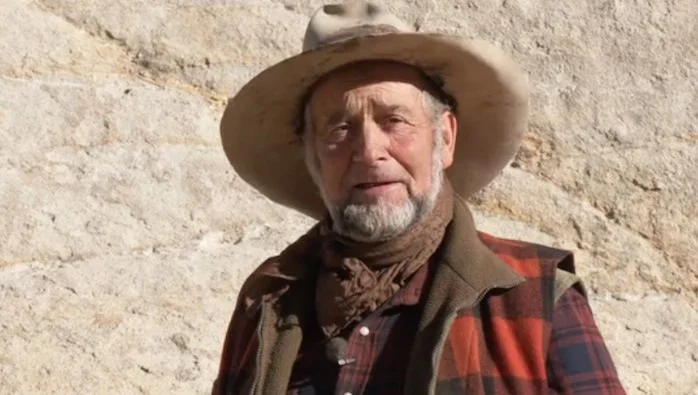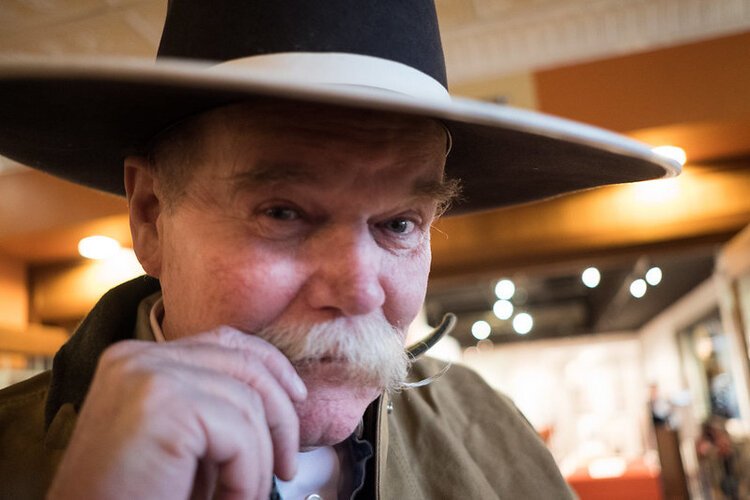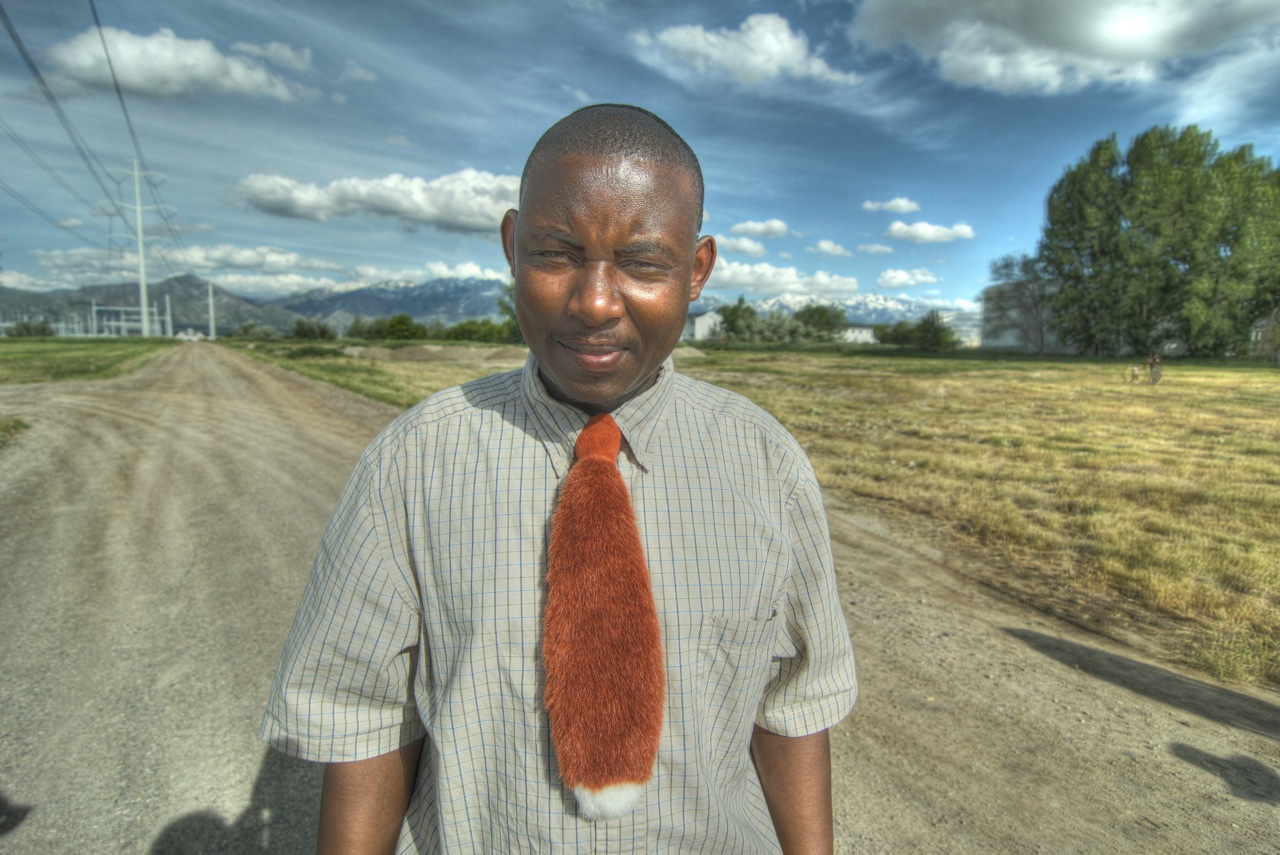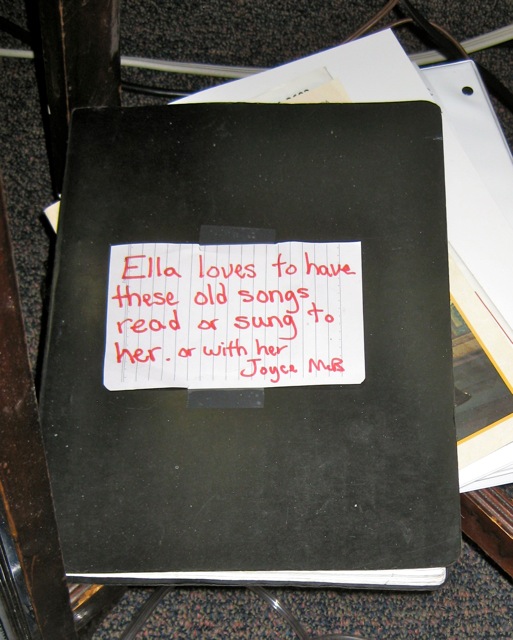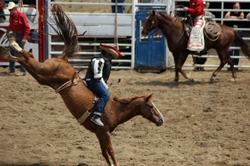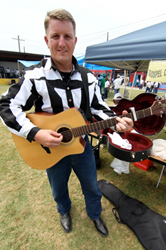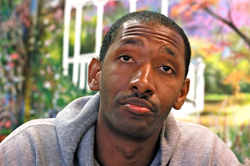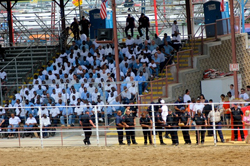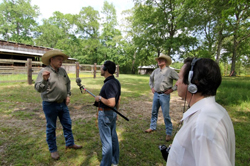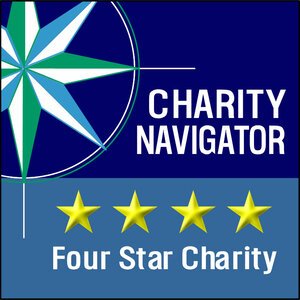Taki Telonidis and Hal Cannon spent a recent evening on the west side of Salt Lake City, Utah, with refugee families preparing to cultivate gardens in an abandoned field. Taki, the Western Folklife Center's Media Producer, wrote this report of his experience.

It didn’t look like much when we got there one evening last week… just an abandoned field near towering power lines that buzzed and crackled, next to an empty softball field encircled by a chain link fence. This was on the west side of Salt Lake City, and we’d come to witness the first chapter of a story that has the potential to change the lives of dozens of refugee families struggling to make a home in America. This project is part of a “growing” trend that helps refugees capitalize on one of the few transferable skills they bring with them from the third world: farming. Last year, Salt Lake County’s refugee coordinator, Ze Min Xiao (Zee), facilitated a handful of tiny informal garden projects that not only provided refugees with food, but also put them side-by-side with Americans who took interest in the refugees, sprouting friendships and even a few potluck dinners. This year Zee is organizing a more ambitious project: a small training farm that will be managed and tilled by four refugee communities in the city. The short-term goal is to provide these folks with supplemental income, but the longer-term goal is to cultivate a crop of commercial farmers who might one day own and run their own farms.
Hal Cannon and I were excited about this project from the moment we heard about it a couple weeks ago. We’d been looking for a refugee story for several months, and this seemed like a perfect fit given the rural mission of the Western Folklife Center. Plus we’d get to follow the story from its inception, over the course of the summer, to harvest time. So the plan was to meet Zee and two facilitators at the farm site, and look on as they did an orientation for leaders of the four participating refugee communities: Ethiopian, Bhutanese, Burundian and Chin (from Myanmar). We’d parked our car and weren’t sure we were even at the right place until a second car pulled up and a man stepped out with an equally disoriented expression on his face. This was Michael and he was representing the Ethiopian community of Salt Lake. Other cars pulled up and it wasn’t long before about a dozen men and women (representatives as well as some potential gardeners) were surveying the weedy field… looking like a delegation from the United Nations. Zee and her colleagues Chris and Steve did their best to explain the size of the plots, and the plans for preparing and tilling the soil, bringing in a tool shed, building fencing and irrigation, etc. As they spoke, my mind was transforming this fallow field into a verdant utopia where the four communities would work side-by-side sowing the seeds of their future. I imagined our completed radio feature: an inspiring, quintessentially American story of rebirth in the new world.
I snapped out of my daydream when Zee asked if there were any questions, and the group began peppering the organizers with queries. It was clear that some had not understood all the information that was conveyed to them, while others were hoping to accommodate many more families than their plot could support. One man asked if it would be okay to grow medicinal plants he wanted to import from India, while another wanted to raise goats at the site. The questions were handled graciously by Zee, Chris and Steve who promised to explore as many possibilities as they could. It began to dawn on me just how ambitious this project really is. The potential for that utopia is there, but it’s going to take an enormous amount of physical labor, diplomacy and translation to get to the promised land. This is, after all, a mash up of four cultures, each with its own language, leadership style and way of doing things, all trying to create something that must conform to American rules and regulations.
The meeting ended with handshakes and an agreement to meet at the plot in 10 days with volunteers from each community who’d begin work on building rows and pathways for the farm. After Zee left, each delegation broke up into a huddle with the leaders of each group fielding questions from those who didn’t speak English. Hal and I were suddenly surrounded by animated conversations in four languages, as the field slowly turned golden in the evening light. The refugee farm project was officially under way, and I had a sense that there would be many huddles like this one in the coming weeks and months. Once again my mind drifted forward to what this plot of land might look like in two weeks, or two months, and whether this whole experiment would flourish or whither on the vine.
Crack!
I was brought back to the moment by the sound of a baseball bat hitting a ball. While we’d been engulfed in discussions about the farm, two women’s softball teams had taken the adjacent field and a game was in full swing. I stepped back to take in these contrasting worlds, impossibly different from each other, separated only by a few yards and a simple chain link fence.
P.S. Stay tuned to our blog for occasional updates and photos of the Refugee Farm Project.

